
WXY was a finalist for The Scioto River Downtown Pedestrian Bridge competition, a project of the City of Columbus to connect the Scioto River Peninsula to the Arena District, and to link the nationally recognized Scioto Mile Riverfront Park.
Our first design concept is a suspension bridge over the river.
This scheme clears the river in a single curving gesture, with hangers transmitting the deck’s weight to the catenary cables elegantly draped between the towers. The concept for a long-span suspension bridge features two paired 4"-diameter cables that span 700 feet between two inverted-V towers.
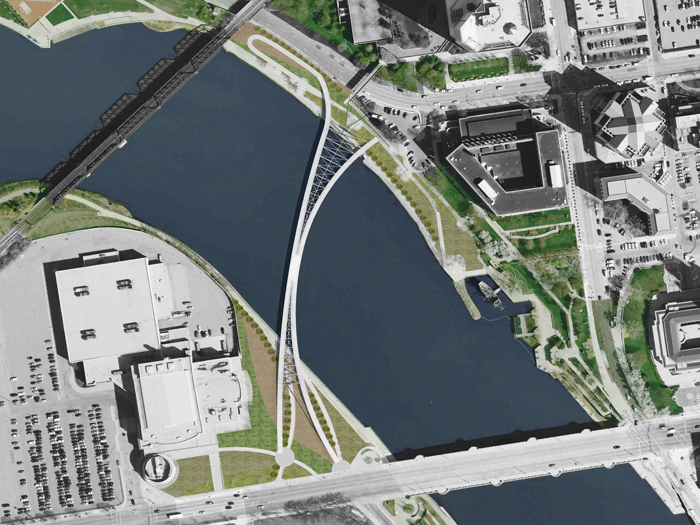
A wishbone walkway plan connects two new parks on the north and south banks of the river. At the bridge’s center, the paths merge, creating a larger deck as a gathering place, a seamless extension of the parks across the river. The concept will enable safe circulation for walkers, cyclists, runners, and strollers, and provide seating and spaces for rest.
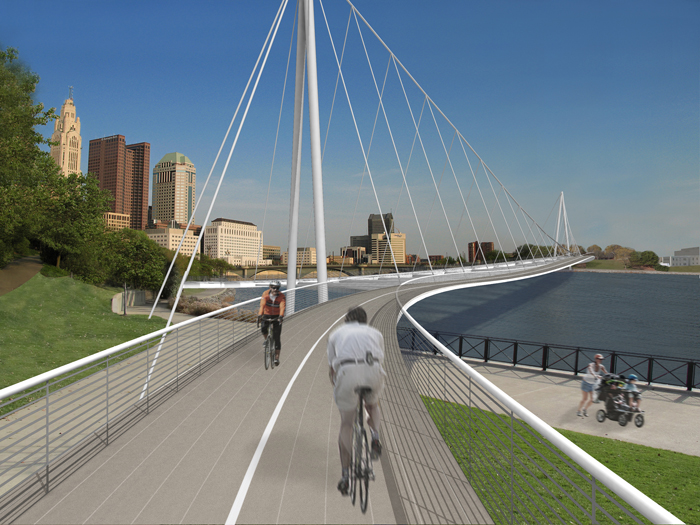
This design option would be a dynamic addition to the
Our second design concept, P-Arc Connector, is a truss arch bridge.
The double curved plan connects the high points on both sides of the river. A double
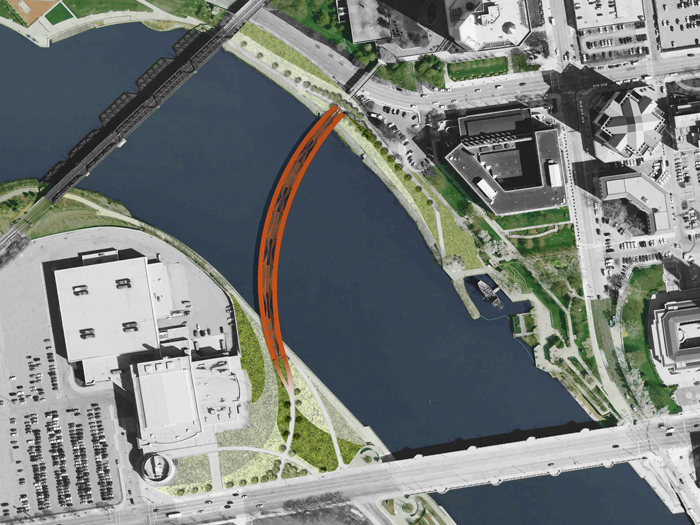
As in Design Concept 1, the bridge extends the parks to create a continuous public space from riverbank to riverbank. In this scheme, the bridge is itself a park-like element; the plan and the truss structure allow for areas that could be planted, creating an arbor bridge. Two walkways at slightly different levels are connected through the truss and provide a number of appealing seating options and spaces for rest and gathering.

The elevation change also varies bridge users’ visual experiences of the river and downtown
This concept gives us an opportunity to do a beautiful bridge constructed using the local steel fabrication industry. The introduction of color would set off the bridge against the backdrop of the city and landscape, making it a design icon for the city.
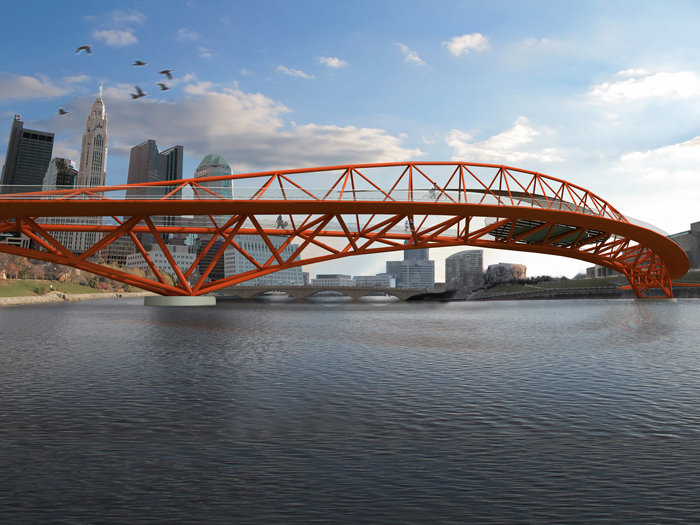
Design Concepr 3, the arch-beam bridge, combines aspects of Design Concepts 1 and 2 - it connects the high points on both sides of the river, and creates a new porch-like room on the waterfront. The scheme features a torqued arch-shaped truss set on two central bridge piers. This truss is composed of two stacked triangular space frames that share central chords, made up of tubular steel sections that create a strong frame from which to hang the deck and the "brow." The central 500-foot span is flanked by two 200-foot cantilever spans allowing for minimum abutments on the land.

As in Design Concepts 1 and 2, the bridge extends the parks to create a continuous public space from riverbank to riverbank. The torqued truss creates a place for two different kinds of experiences that meet in the center of the bridge. Two walkways at slightly different levels are connected through the truss and provide a number of appealing seating options and spaces for rest and gathering.
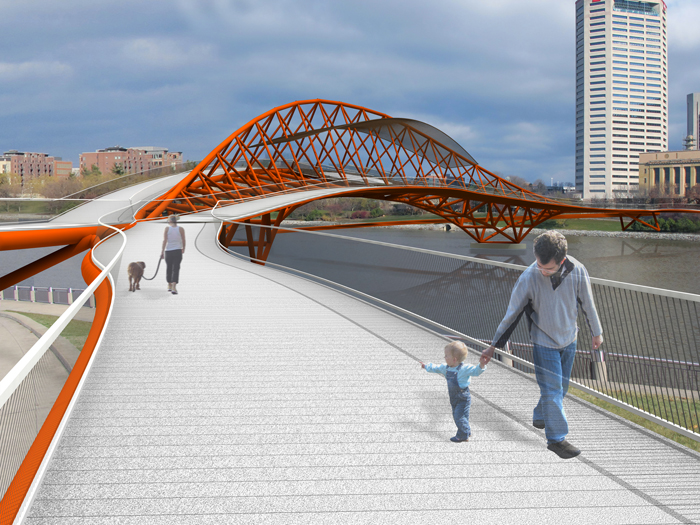
The elevation change also varies bridge users’ visual experiences of the river and downtown

This concept gives us an opportunity to do a beautiful bridge constructed using the local steel fabrication industry. The introduction of color would set off the bridge against the backdrop of the city and landscape, making it a design icon for the city.